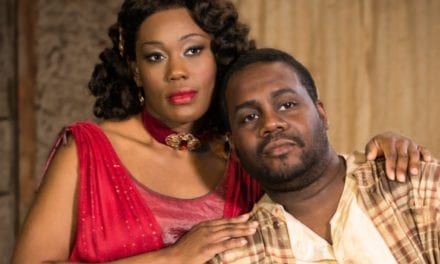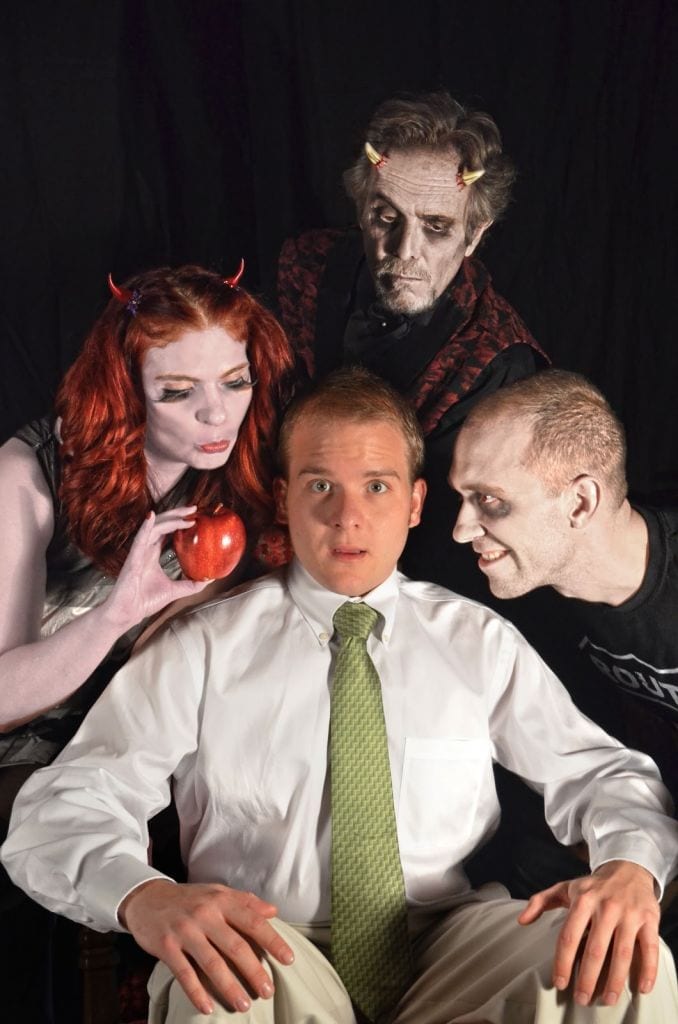SARATOGA SPRINGS — After last year’s successful production of The Sound of Music, I was anxiously anticipating Saratoga Springs Theatre Company’s newest production: Shrek the Musical, especially because this would be the first Utah production of Shrek. Unfortunately, the arts council staff at Saratoga Springs chose a play that exceeded what their resources could handle, and the results were apparent in almost every scene of the play.
First, the good aspects of this show: NeCole Joy Davidson is a charming Fiona, the princess who is locked in a tower as a child and must wait for her prince to rescue her. In Davidson’s first moments on stage, she established herself as a charismatic performer, especially in “I Know It’s Today,” in which she showed the patience and anxiety of her character. Her performance of “Morning Person” was also a highlight of the evening because of Davidson’s ability to capitalize on the humor written into the song by composer Jeanine Tesori and lyricist David Lindsay-Abaire. Travis Anderson also gave a pleasant performance as Shrek, the ogre chased out of his swampland home. Anderson’s Scottish accent was impeccable during the entire evening, but never felt like a copycat of Mike Myers’s performance in the film. Anderson also has a nice voice that was best displayed in “Big Bright Beautiful World” and “When Words Fail.” However, I wish Anderson had displayed a wider range of emotions and vocal choices as the ogre. Most of his scenes were performed in very similar ways across the entire play, which made it difficult for me to connect emotionally with Shrek.
Tyler Hinton made me chuckle several times as Lord Farquaad, the diminutive and immature leader of the land of Duloc. Tyler Hinton took full advantage of the inherent visual humor of his costume (which made him appear much shorter than the actor is in real life), especially in “What’s Up, Duloc?” Yet, during his songs (such as “Ballad of Farquaad”) Tyler Hinton’s facial expressions didn’t show much excitement or animation, which made the character seem detached from the action. This lack of enthusiasm in the songs was apparent in much of the cast, although there were some pleasant exceptions in the ensemble, such as Rebecca Goodwin as the witch.
I also appreciated Mara Hinton’s direction, which kept the play moving at a brisk pace. Mara Hinton also created interesting stage pictures to accompany the songs “Travel Song” and “Forever.” She also managed the large group scenes (like the wedding) well and provided a variety of stage business for her actors and ensemble, which kept the dialogue scenes interesting to watch. The choreography for Shrek the Musical (from Tyfani Balzotti, Becca Crookston, and Mara Hinton) was fun to watch, especially for the Three Blind Mice (Madison Goodwin, Makenna Goodwin, and Oaklie Wayman) and during “What’s Up, Duloc?” None of the choreography was very complex, but in an amateur production I would rather see simple choreography executed well than sloppy performances of more complex dancing.
Moreover, the costumes for the production were excellent for an amateur production, with the costumes for Farquaad and Fiona being my favorites. No costume designer is credited (although Mara and Tyler Hinton are credited as production designers and a list of ten people are credited for costumes, sets, and props), but the costumes were all appropriately theatrical and of higher quality than many that are seen in amateur productions of musicals. However, it is clear that the costumes were where most of the budget for this play was spent, and the quality of the costumes came at great sacrifice to the sets, props, and other technical elements.
The worst of the technical aspects of this play was the sound. In every scene microphones crackled, didn’t function, or were turned on late. Moreover, the actors’ microphones were poorly balanced so that sometimes a singer would be overpowered by the prerecorded music or one person’s microphone would be turned up louder than everyone else’s on stage, which would drown out the rest of the cast. These microphone problems made much of the dialogue and singing incomprehensible, and I doubt I would have been able to follow the story if I weren’t familiar with the film version. No sound designer or technical director is credited in the program, which may be the root of the problem with the sound in the show. Compounding the sound problems was the lack of diction from many of the performers, especially during the songs. “Regiment” was completely unintelligible, and I couldn’t understand large portions of “Story of My Life.” I wish that music director Tyler Hinton had encouraged his cast to sing more clearly for the benefit of audience members (like me) who are not familiar with the score. In the end, the diction and microphone problems made much of the evening an unpleasant assault on the ears.
Furthermore, Shrek the Musical has a script with a lot of technical demands, including a dragon, lighting effects, and many sets. None of the scenery looked good enough to be on the stage of some of the more successful amateur companies in the area—especially Fiona’s tower—and lighting effects were nonexistent. Again, no lighting or set designer is credited in the program (although Tom Marsden is credited as a master carpenter), which leads me to believe that the finances and/or manpower were not sufficient for Saratoga Springs Theatre Company to give these technical elements the full attention they needed.
But I could sum up my complaints about the sound, the lighting, the set, the acting, and the singing in one simple sentence: Shrek the Musical was not a good choice for Saratoga Springs Theatre Company to produce. Had the arts council staff chosen a show better suited for the company’s resources, they could have matched or surpassed last year’s success. Instead, they chose to produce a play that was so difficult and complex that it was almost impossible for them to do justice to the script and score. The final product, therefore, is a sad example of a talented director and cast mired in a play that never really had a chance.







